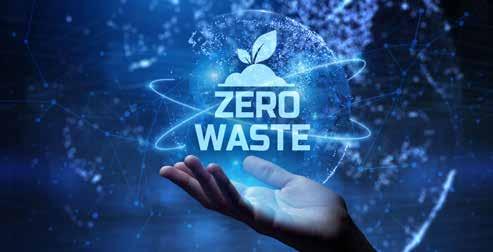B I O R E M E D I AT I O N
Lessons learnt in implementing
To briefly summarise the concept of enhanced in situ bioremediation (EISB) discussed in this series, the strategy is to stimulate the existing microbial population in an aquifer, by adding substrate or other microbes. The aim of this is to enhance the ability of that microbial system to degrade chlorinated hydrocarbons or other chemicals of concern. By Michelle Roux and Sathisha Barath*
T
his ar ticle considers some of the key practical elements in applying bioremediation technology, which turns an aquifer – a matrix of water, rock and soil – into what is essentially a giant, underground bioreactor. A primar y step in the design of an effective inter vention is the accurate characterisation of the aquifer’s microbiology, geochemistr y and geology. This lays the groundwork for the task of physically reaching the microbes with the substrate.
plume with more than one chemical. This will determine which microbes are to be targeted for enhancement. General groupings such as the Dehalobacter species are considered effective in degrading chlorinated ethanes, for instance, while the genus Dehalococcoides is more commonly used in addressing chlorinated ethenes. However, for some sites, there may not be a specific group of microbes associated with the degradation required – which will need intensive research and trials. Microbes can also give each other the ability to adapt – rather like a flu virus.
Holistic approach In addition to the gene sequencing of the groundwater to establish which microbe groups are present, characterisation of the site demands data generated within a range of specialist fields. This holistic approach highlights the need for integrated and multidisciplinar y teams in these projects, with each discipline bringing its own crucial insights. The expertise required ideally includes microbiology, molecular biology, geology, environmental science, toxicology, isotopic chemistr y, geochemistr y, and several aspects of engineering. This makes for robust teams, where knowledge is reinforced while members can trade their strengths and weaknesses. Such a team is also better able to develop and apply a detailed understanding of exactly what processes are under way in the system. This is much more productive and rewarding than the simplistic use of a checklist to drive this intricate process.
Independent experts Understanding conditions Characterisation will describe conditions such as the depth at which the contaminant mass is located, the size of the mass, and what type of contamination exists. In the case of dense nonaqueous phase liquids (DNAPLs), for example, there may be chlorinated ethanes or ethenes present – and there may exist a co-mingled
36
FEBRUARY 2021
|
ReSource
Involving a range of specialised skills, bioremediation projects can often struggle to find the right levels of experience. Such expertise, however, is a vital ingredient to success. Creating and managing these living ‘bioreactors’ needs constant review and data assessment by exper ts, even outside of the project team. Bear in mind that the
per formance of the system can only be monitored indirectly – as it cannot be physically obser ved; the accuracy and interpretation of data is therefore paramount. Not only must the project team be open to modifying and adapting its strategies based on expert advice – but the client must also be prepared to regularly rethink the project’s direction. No two projects will be identical, and each will need its own iterative strategy. Even between boreholes on the same project, the consortium of microbial populations may var y. Constant evaluation is key, followed by the necessar y adaptations of strategy.
Cultures – source or grow? A range of microbes that can be purchased to stimulate the microbial mass in a contaminated aquifer are specially cultivated in mainly American and European laboratories. There is no guarantee, however, that they will function effectively in any specific local environment. Our experience has been that existing microbes, which have already adapted to the local aquifer conditions, tend to be more robust and adapted to the in situ environment – even if this might take longer. Again, the key is detailed monitoring and regular adaptation wherever necessar y. SRK has achieved considerable success, for instance, in distributing existing microbes from stronger to weaker sections of a biobarrier. This ‘inoculation’ of the lagging parts of the biobarrier helps to create greater homogeneity across the aquifer.
Investing in local labs Bioremediation projects are not short term; they take years, if not decades, and demand that considerable expertise be developed over the duration. For this reason, it is ideal to invest in the capability and knowledge of local





















